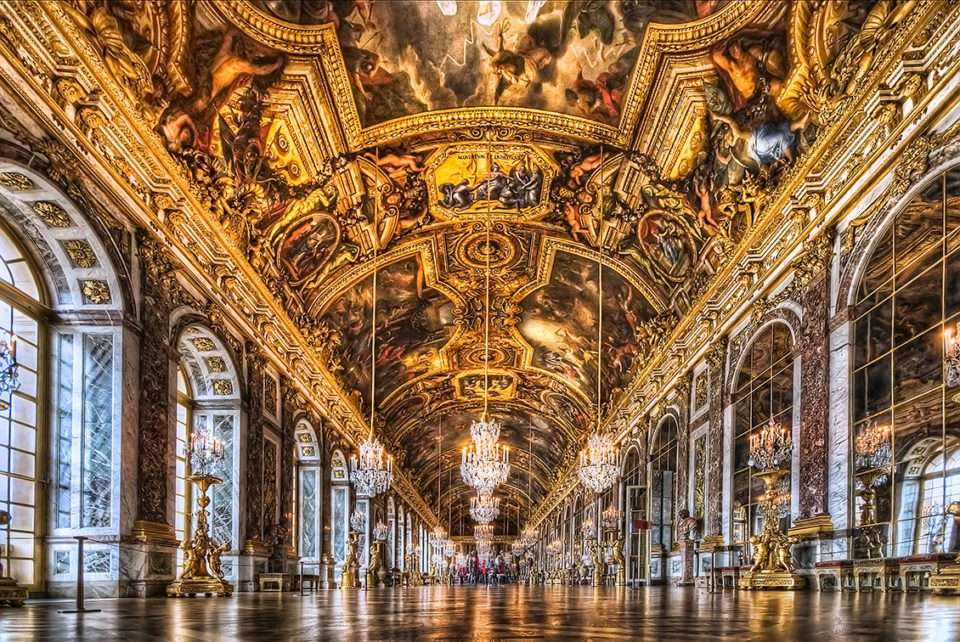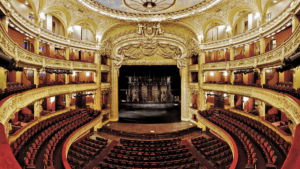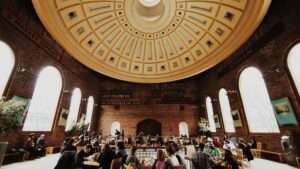Introduction to the Baroque Era
The Baroque Era, a term derived from the Portuguese word ‘barroco’ meaning ‘oddly shaped pearl’, was a period in Western history marked by dramatic arts, grandeur in architecture, and complex musical compositions. Spanning from the late 16th century to the mid-18th century, this era was a time of exploration, religious tensions, and grand artistic expressions.
The Baroque style originated in Rome, Italy, and quickly spread across Europe, influencing the arts in countries such as France, Spain, and the Netherlands. The era was characterized by its opulence, with artists and architects favoring intricate details, intense light and shadow effects, and a sense of movement in their works.
Historical Context of the Baroque Era
The socio-political climate of the 17th and 18th centuries played a significant role in shaping the Baroque era. Europe was undergoing significant changes during this period, with the rise of absolute monarchies, the discovery of new lands, and the ongoing religious tensions following the Protestant Reformation.
The Catholic Counter-Reformation was a significant influence on the Baroque era. In response to the Protestant Reformation, the Catholic Church initiated a movement to reform the Church from within and to counter the Protestant threat. This movement had a profound impact on the arts, with the Church commissioning works that were grand, emotional, and dramatic to inspire faith and devotion among the populace.
Artists of the Baroque era were encouraged to create works that would appeal to the senses and stir the emotions, leading to the creation of some of the most dynamic and emotionally charged works in art history. You can explore more about this in the Baroque Rome at The Metropolitan Museum of Art.
The Baroque era was not just confined to religious art and architecture. It also saw the creation of many non-religious themes in art, including portraits, landscapes, and still lifes. The Baroque style was also prevalent in music and literature, with composers and writers creating works that mirrored the grandeur and complexity of the Baroque aesthetic.
The influence of the Baroque era can still be seen today, with many modern artists and architects drawing inspiration from the grandeur and drama of Baroque works. For a deeper understanding of the Baroque era, you can visit Understanding Baroque at Tate.
Characteristics of Baroque Art
Baroque art is characterized by its dynamic movement and bold realism. Unlike the balanced and harmonious compositions of the Renaissance, Baroque art is filled with a sense of movement and energy. Artists of this era used swirling lines, dramatic lighting, and strong contrasts to create a sense of dynamism and tension in their works.
One of the defining characteristics of Baroque art is its bold realism. Artists strived to depict the world as it is, with all its imperfections and irregularities. They used detailed and realistic representations to create a sense of immediacy and intimacy, making the viewer feel as if they are part of the scene.
Another key feature of Baroque art is its emotional appeal and theatricality. Baroque artists aimed to evoke strong emotional responses from the viewer. They achieved this through the use of dramatic lighting, intense colors, and dramatic compositions. The theatricality of Baroque art is also evident in the grand scale of many Baroque paintings and sculptures, which were often designed to impress and overwhelm the viewer.
Major Artists and Works of the Baroque Era
The Baroque era produced some of the most renowned artists in history, whose works continue to inspire and influence artists today.
- Gian Lorenzo Bernini is often considered the father of Baroque sculpture. His works are characterized by their dynamic compositions, realistic details, and emotional intensity. One of his most famous works is the “Ecstasy of Saint Teresa,” a marble sculpture that perfectly embodies the theatricality and emotional appeal of Baroque art.
- Sir Peter Paul Rubens was one of the most influential painters of the Baroque era. Known for his dynamic compositions and vibrant use of color, Rubens’s works are filled with movement and energy. His painting “The Descent from the Cross” is a prime example of Baroque painting, with its dramatic lighting, emotional intensity, and dynamic composition.
- Sir Anthony Van Dyck was a prominent painter of the Baroque era, known for his portraits of royalty and nobility. His works are characterized by their elegance and sophistication, with a subtle use of color and light to create a sense of depth and realism. His portrait of “Charles I at the Hunt” is considered one of the most iconic portraits of the Baroque era.
These artists, with their innovative techniques and expressive style, played a significant role in shaping the Baroque era and its legacy. For a deeper understanding of their works, you can explore Baroque Music.
Baroque Architecture
Baroque architecture is known for its grandeur and ornateness. This style of architecture is characterized by elaborate details, dramatic forms, and a sense of movement. Baroque architects aimed to create buildings that would impress and awe the viewer, using a combination of scale, complexity, and opulence to achieve this effect.
One of the defining features of Baroque architecture is its use of curves and undulating forms. Baroque architects often used curved lines and surfaces to create a sense of dynamism and movement in their buildings. They also used elaborate ornamentation and decorative details to create a sense of richness and grandeur.
Notable architectural works of the era include the St. Peter’s Basilica in Vatican City, the Palace of Versailles in France, and the Church of San Carlo alle Quattro Fontane in Rome. These buildings are characterized by their grand scale, elaborate details, and dramatic use of light and shadow. For a deeper understanding of Baroque architecture, you can visit Baroque Rome at The Metropolitan Museum of Art.
Influence and Spread of Baroque Across Europe
The Baroque style was not confined to Italy but spread across Europe, where it was adapted to suit local tastes and traditions. Each country developed its own version of the Baroque style, resulting in a variety of regional variations.
In France, for example, the Baroque style was characterized by its elegance and restraint. French Baroque architecture, as exemplified by the Palace of Versailles, is known for its symmetrical layouts, classical proportions, and subtle use of ornamentation.
In contrast, the Baroque style in Spain was characterized by its exuberance and dramatic use of light and shadow. Spanish Baroque architecture, as seen in the Granada Cathedral, is known for its elaborate ornamentation, dramatic forms, and intense emotional appeal.
In the Netherlands, the Baroque style was adapted to suit the country’s Protestant sensibilities. Dutch Baroque architecture, as exemplified by the Royal Palace of Amsterdam, is characterized by its simplicity, practicality, and restrained use of ornamentation.
These regional variations of the Baroque style reflect the cultural diversity of Europe during the Baroque era. For a deeper understanding of the spread and influence of Baroque across Europe, you can visit Understanding Baroque at Tate.
The Baroque Era in Music and Literature
The Baroque era was a time of great innovation and creativity in music and literature. This period saw the development of new musical forms and styles, as well as the emergence of some of the greatest composers and writers in history.
Key composers of the Baroque era include Johann Sebastian Bach, George Frideric Handel, and Antonio Vivaldi. These composers are known for their complex musical compositions, characterized by intricate melodies, ornate ornamentation, and a high degree of emotional expressiveness.
Baroque literature, on the other hand, was characterized by its ornate style and complex themes. Writers of the Baroque era, such as John Milton and Molière, are known for their use of elaborate metaphors, intricate plot structures, and a focus on emotional and psychological depth.
The End of the Baroque Era and its Legacy
The Baroque era came to an end in the mid-18th century, giving way to the Rococo and Neoclassical styles. The Rococo style, characterized by its lightness, elegance, and decorative charm, was a reaction against the grandeur and seriousness of the Baroque. The Neoclassical style, on the other hand, sought to return to the classical ideals of simplicity, balance, and restraint.
Despite the transition to new styles, the legacy of the Baroque era continues to be felt in modern art and architecture. The dramatic forms, emotional intensity, and ornate details of Baroque art and architecture have influenced many modern artists and architects, while the complex compositions and emotional expressiveness of Baroque music continue to inspire musicians today.
The Baroque era, with its emphasis on grandeur, emotion, and complexity, has left a lasting impact on the world of art, music, and literature. For a deeper understanding of the legacy of the Baroque era, you can explore Baroque Music.
FAQs
1. What is the Baroque Era?
The Baroque Era was a period in Western history from the late 16th century to the mid-18th century, characterized by grandeur in art, architecture, music, and literature.
2. What are the key characteristics of Baroque art?
Baroque art is known for its dynamic movement, bold realism, emotional appeal, and theatricality. Artists of this era used intricate details, intense light and shadow effects, and a sense of movement to create dramatic and emotionally charged works.
3. Who are some notable artists of the Baroque Era?
Notable artists of the Baroque Era include Gian Lorenzo Bernini, Sir Peter Paul Rubens, and Sir Anthony Van Dyck. Their works are characterized by their dynamic compositions, realistic details, and emotional intensity.
4. How did the Baroque style influence architecture?
Baroque architecture is known for its grandeur and ornateness. Architects of this era used elaborate details, dramatic forms, and a sense of movement to create buildings that would impress and awe the viewer.
5. What is the legacy of the Baroque Era?
The Baroque Era has left a lasting impact on the world of art, music, and literature. The dramatic forms, emotional intensity, and ornate details of Baroque art and architecture continue to influence modern artists and architects, while the complex compositions and emotional expressiveness of Baroque music continue to inspire musicians today.
Conclusion
The Baroque Era was a time of grandeur, emotion, and complexity in the world of art, music, and literature. From the dynamic movement and bold realism of Baroque art to the ornate grandeur of Baroque architecture, this era has left a lasting legacy that continues to influence modern art and culture. As we continue to explore and appreciate the works of this era, we gain a deeper understanding of the richness and diversity of human creativity. For a deeper understanding of the Baroque era, you can explore Understanding Baroque at Tate.




